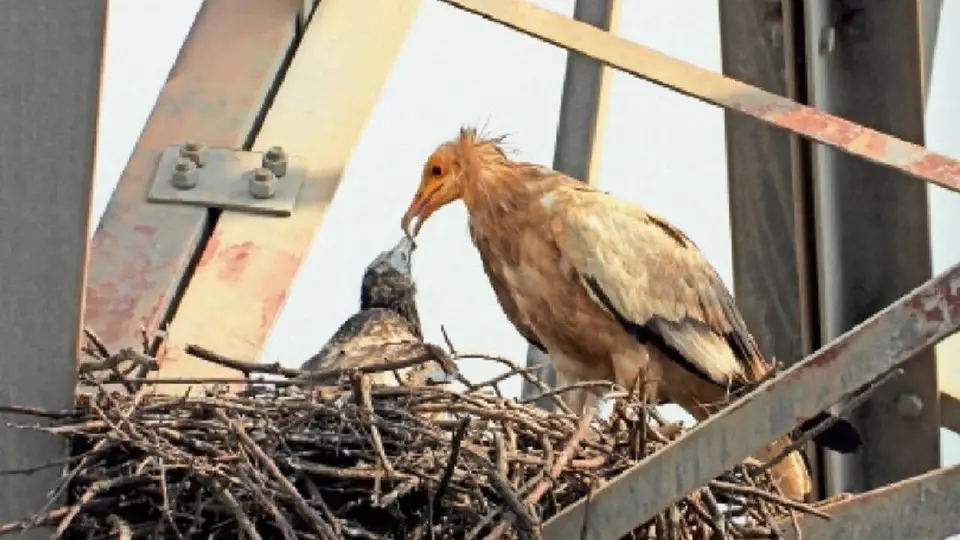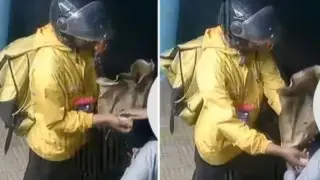
Credit:Top Indian News (Credit:Top Indian News)
Trending News: In southern Spain, scientists went to study vultures but ended up finding something very different. While checking the nests built on high cliffs, they found a handmade sandal hidden among twigs and wool. At first, it looked strange, as no one expected human objects in a bird’s nest. But when researchers examined closely, they realized the sandal was centuries old. Tests later showed it was nearly 750 years old, making it a rare historical discovery. This single object turned a normal wildlife study into an unexpected link with the medieval past.
The scientists later checked more nests in the same region. In twelve different nests, they discovered items that were not just bones and feathers. There were baskets, textiles, leather pieces, and even tools hidden under the layers. Vultures had collected these while picking up materials for nests or feeding on remains near human areas. Over centuries, these objects stayed protected in cool and dry conditions. The result was a natural storage of history that humans had completely forgotten about.
Bearded vultures are known to use the same nests for many generations. Every year, they add new material, which creates natural layers inside the nests. These layers act like the pages of a book, quietly storing stories of both birds and humans. By studying them, scientists can learn about old human settlements and the natural environment around them. In this case, the nests became silent witnesses of history, protecting objects that tell us about medieval life.
The team treated the nests as if they were ancient excavation sites. They used carbon dating to check the real age of objects. They also studied the types of bones, feathers, and fibres mixed inside. Each detail gave them clues about past lifestyles, including what people wore, what animals they used, and even what the land looked like centuries ago. One painted piece of sheep leather found inside was also dated back to medieval times. Such objects provided a rare and honest picture of human life.
Scientists believe these nests are not only about old objects. They can also help us understand how the environment has changed. Egg fragments could show whether birds were exposed to toxic materials in the past. Tree branches, wool, and other remains may reveal what kind of animals and plants lived in the area. This information can be useful in knowing how climate, farming, and wildlife have shifted over hundreds of years. In this way, the nests are more than time capsules.
This habit of birds is not new. Around the world, birds often pick up human objects for building nests. Wildlife experts say they have found toys, shoes, and even plastic items in modern nests. Birds may be attracted to the texture, shape, or simply collect things available near villages and towns. In Spain’s case, vultures unknowingly preserved history while doing their normal activities. This makes the discovery special because it joins human past with natural behaviour.
The study shows that traces of history are not only found in monuments or books. Sometimes, nature creates its own archive in the most unusual places. In this case, vultures became unexpected protectors of human memory. Their nests acted like museums hidden inside cliffs, keeping medieval objects safe for 750 years. For scientists, it was a reminder that the story of humans and nature has always been linked. What began as a simple wildlife project ended as a surprising journey into history.













Copyright © 2025 Top Indian News
